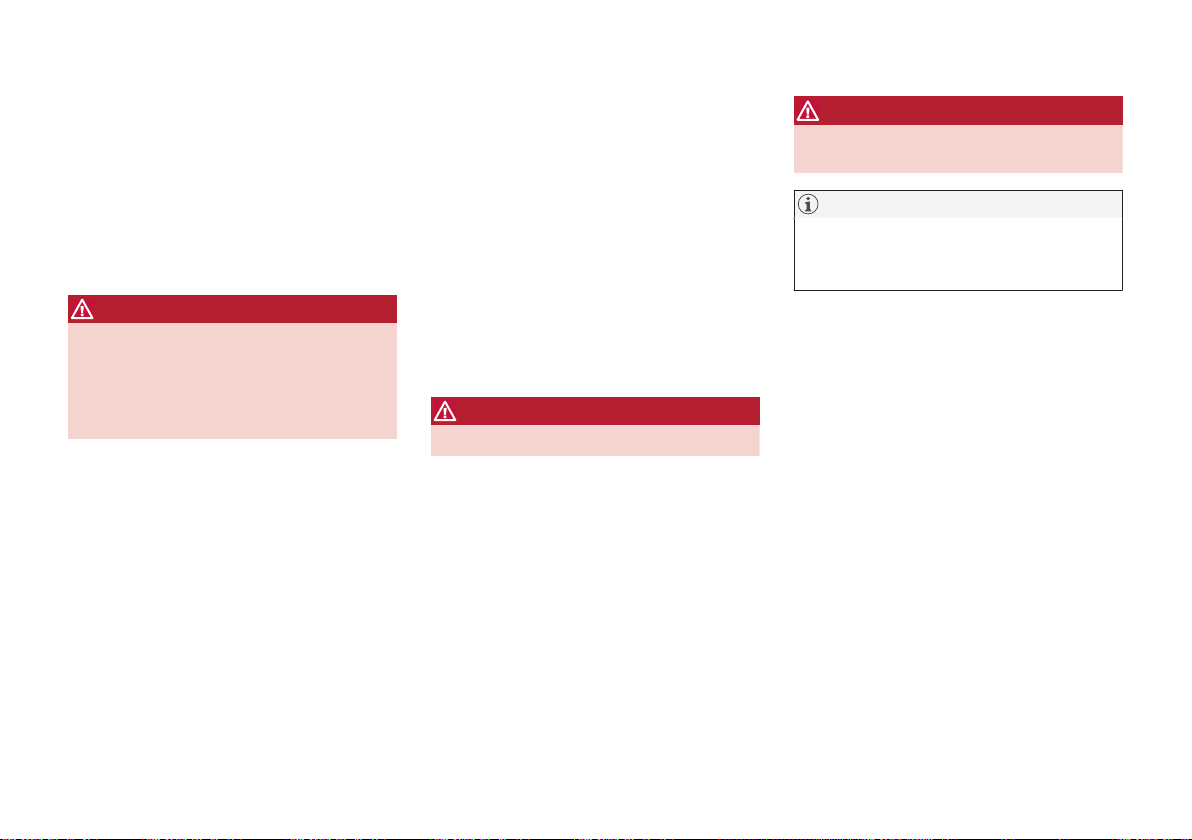Loading ...
Loading ...
Loading ...

||
WHEELS AND TYRES
590
13. Fit the protective cap on the air hose in
order to avoid leakage of the remaining
sealing fluid. Place the equipment in the
cargo area.
14. As soon as possible, drive at least 3 km
(2 miles) at a maximum speed of 80 km/h
(50 mph) so that the sealing fluid can seal
the tyre, and then perform a follow-up
check.
WARNING
Sealant will spurt out of the puncture dur-
ing the first few rotations of the tyre. Make
sure that nobody is standing near the car
and gets the sealing fluid splashed onto
them when the car is driven away. The dis-
tance should be at least 2 metres (7 feet).
15. Follow-up inspection
Connect the air hose on the tyre valve and
screw in the valve connection to the bot-
tom of the tyre valve's thread. The com-
pressor must be switched off.
16. Read the tyre pressure on the pressure
gauge.
•
If it is below 1.3 bar (19 psi) then the
tyre is insufficiently sealed. The journey
should not be continued. Call roadside
assistance for recovery.
•
If the tyre pressure is higher than
1.3 bar (19 psi), the tyre must be infla-
ted to the pressure specified in accord-
ance with the tyre pressure label on the
driver's side door pillar (1 bar = 100 kPa
= 14.5 psi). Release air using the pres-
sure reducing valve if the tyre pressure
is too high.
WARNING
Check the tyre pressure regularly.
Volvo recommends that the car is driven to the
nearest authorised Volvo workshop for the
replacement/repair of the damaged tyre.
Advise the workshop that the tyre contains
sealing fluid.
The sealing fluid bottle and hose must be
replaced after use. Volvo recommends that
these replacements be performed by an
authorised Volvo workshop.
WARNING
Maximum mileage with tyres containing
sealing fluid is 200 km (120 miles).
NOTE
The compressor is an electrical device. Fol-
low local regulations related to waste man-
agement.
Related information
•
Recommended tyre pressure (p. 574)
•
Emergency puncture repair kit (p. 586)
•
Inflating tyres with the compressor from
the puncture repair kit (p. 591)
Loading ...
Loading ...
Loading ...